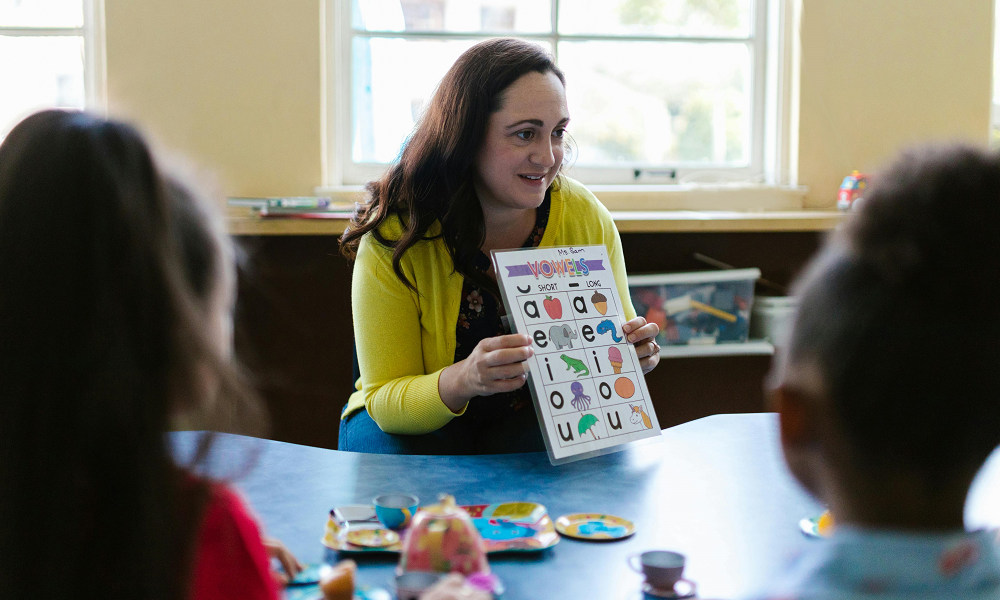Reviews
Top 5 Ways to Support Students With Autism in the Classroom

Have you ever wondered what you can do as a teacher to help students with autism thrive in your classroom? It’s no secret that students with autism face unique challenges that require specialized approaches. By implementing effective strategies, educators can create an inclusive environment where every student feels supported and understood. Whether you’re new to teaching or have years of experience, the key to success is understanding the individual needs of your students and continuously learning how to meet them.
Let’s explore five actionable ways to support students with autism in the classroom.
1. Understand the Unique Needs of Each Student
Every student with autism is unique, and no single approach works for everyone. Some students may excel academically but struggle socially, while others might have sensory sensitivities or difficulty processing verbal instructions. As a teacher, the first step is to get to know each student’s strengths, challenges, and individual needs.
To do this effectively, start by collaborating with parents and specialists who are familiar with the student’s developmental history. Use tools like Individualized Education Plans (IEPs) to tailor your teaching methods to their goals. Formal and informal assessments can help you better understand where the student needs support.
For teachers seeking to expand their knowledge in this area, advanced training can be invaluable. Programs like an online master’s degree in special education autism equip educators with evidence-based practices and strategies to support students with autism and other disabilities. This program focuses on topics such as behavior management, individualized instruction, and transition planning, ensuring teachers are well-prepared to meet diverse needs.
2. Create a Structured and Predictable Environment
Students with autism often thrive in environments that are consistent and predictable. A lack of structure can lead to confusion or anxiety, which can disrupt learning. By establishing clear routines and expectations, you can help students feel more secure and focused in the classroom.
Here are some ways to create a structured environment:
- Use visual schedules to outline the day’s activities.
- Clearly communicate transitions between tasks.
- Keep classroom rules simple and reinforce them regularly.
- Arrange the physical space to reduce sensory distractions, such as loud noises or clutter.
When students know what to expect, they are more likely to stay engaged and participate. A structured classroom doesn’t just benefit students with autism—it can improve the learning environment for all students.
3. Use Communication Strategies That Work
Communication is one of the most common challenges for students with autism. Some students may be nonverbal, while others might struggle with processing language or expressing their thoughts. As a teacher, it’s important to adapt your communication style to meet each student’s needs.
Start by incorporating visual aids, such as charts, symbols, or pictures, to support verbal instructions. Simplify your language and give students time to process what you’re saying. For students who use Augmentative and Alternative Communication (AAC) tools, ensure these devices are easily accessible and integrated into classroom activities.
Patience is key when communicating with students with autism. Avoid rushing them to respond, and celebrate small communication milestones. Over time, your efforts can build their confidence and improve their ability to express themselves.
4. Foster Social-Emotional Learning
Many students with autism struggle with social interactions and emotional regulation. Helping them develop these skills is a crucial part of their education. Social-emotional learning (SEL) can provide students with tools to navigate relationships, understand their emotions, and build resilience.
You can support SEL in the classroom by:
- Using role-playing activities to teach appropriate social behaviors.
- Creating social stories that outline specific scenarios and how to respond to them.
- Pairing students with peer mentors or buddies for collaborative projects.
It’s also important to create a safe and welcoming environment where students feel comfortable expressing themselves. Positive reinforcement can encourage them to engage in social activities and try new experiences. While progress may be gradual, every small step matters.
5. Collaborate With Families and Specialists
Supporting students with autism isn’t something teachers should do alone. Collaboration with families, therapists, and other specialists is essential for creating a comprehensive support system. Parents can provide valuable insights into their child’s strengths and triggers, while specialists, such as speech therapists or occupational therapists, can offer targeted strategies.
Maintain regular communication with families through meetings, emails, or progress reports. Share updates on the student’s achievements and challenges, and ask for feedback on how to improve their experience. When everyone works together, the student benefits from a consistent and supportive approach at home and in the classroom.
As educators, the goal is not just to teach students with autism but to empower them to reach their full potential. Every strategy, no matter how small, contributes to creating a more inclusive classroom where all students can thrive. By taking the time to understand each student’s needs, fostering a supportive environment, and pursuing ongoing professional development, teachers can make a meaningful impact.
Remember, supporting students with autism isn’t just about strategies—it’s about empathy, patience, and a commitment to lifelong learning. With the right mindset and resources, you can help every student succeed.

-

 World1 week ago
World1 week agoEthiopian volcano erupts for first time in thousands of years
-

 Health2 days ago
Health2 days ago8 kittens die of H5N1 bird flu in the Netherlands
-

 Legal7 days ago
Legal7 days agoUtah Amber Alert: Jessika Francisco abducted by sex offender in Ogden
-

 US News6 days ago
US News6 days agoExplosion destroys home in Oakland, Maine; at least 1 injured
-

 Health7 days ago
Health7 days agoMexico’s September human bird flu case confirmed as H5N2
-

 Legal3 days ago
Legal3 days ago15 people shot, 4 killed, at birthday party in Stockton, California
-

 World7 days ago
World7 days agoWoman killed, man seriously injured in shark attack on Australia’s NSW coast
-

 US News2 days ago
US News2 days agoFire breaks out at Raleigh Convention Center in North Carolina




